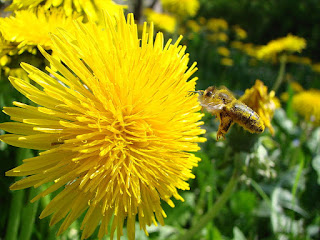A Review of the Medieval Poem Sir Gawain and the Green Knight, composed by some unknown medieval Englishman who thought that King Arthur, if he ever existed, was a fellow Englishman, instead of a Welsh Celt, by JNCL
Okay, confession time (and a bit of a mini-spoiler, but only a very little one). For years, whenever I heard the title of this book, I always assumed that the phrase "green knight" refered to the coat of arms of the knight in question. I thought his shield must be predominantly green, and thus his tunic and his horse's caparison would be, as well. "Huh?" Right. Let me give you a picture of a "caparison," so you'll know what the Hell I'm talking about.
 See how the horse is completely covered in a draping cloth that has his rider's coat of arms worked on it? That's a caparison. (Triple word score with this picture, actually, because it also shows you what a coat of arms is, and how both horse and knight wore pictures of the arms into battle, or at least, into tournaments.) Now you can see why I used to think that the knight was just called "green" because he was probably wearing a lot of green, and would just have appeared green all over. NOPE. I was wrong. The knight who ends up challenging the brave Sir Gawain to a duel of sorts is ACTUALLY GREEN. Green as lettuce. His hair is green. His beard is green. His skin, and his horse's skin, are green. Completely green horse, mane, tail and all.
See how the horse is completely covered in a draping cloth that has his rider's coat of arms worked on it? That's a caparison. (Triple word score with this picture, actually, because it also shows you what a coat of arms is, and how both horse and knight wore pictures of the arms into battle, or at least, into tournaments.) Now you can see why I used to think that the knight was just called "green" because he was probably wearing a lot of green, and would just have appeared green all over. NOPE. I was wrong. The knight who ends up challenging the brave Sir Gawain to a duel of sorts is ACTUALLY GREEN. Green as lettuce. His hair is green. His beard is green. His skin, and his horse's skin, are green. Completely green horse, mane, tail and all.
This medieval romance has many of the expected elements of the French, courtly, chivalric romances, clearly reflecting the Anglo-Norman society that developed in England after the Norman Conquest and its obsession with Arthurian legends. The primary enjoyment I get out of reading books like this is what they reveal about the culture that produced them. I find it fascinating to discover what such a culture's ideals were, what they thought SHOULD HAVE mattered to them, and even more fun to find out what ACTUALLY mattered to them instead! There are more column inches of text devoted to butchering fresh hunting kills in this book than to any other single subject, despite all the talk of Marian religious devotion and chivalric knightly behavior. Sir Gawain might be brave, bold and virtuous, but it's clear that the poet is REALLY impressed by the guy who brings home the venison.
Anyway, if you like Arthurian romance, you should definitely look up this one. And if you want to make both seem even much funnier, read this book and then immediately afterwards watch "Monty Python and the Holy Grail." You may need an oxygen mask to help you recover!






















